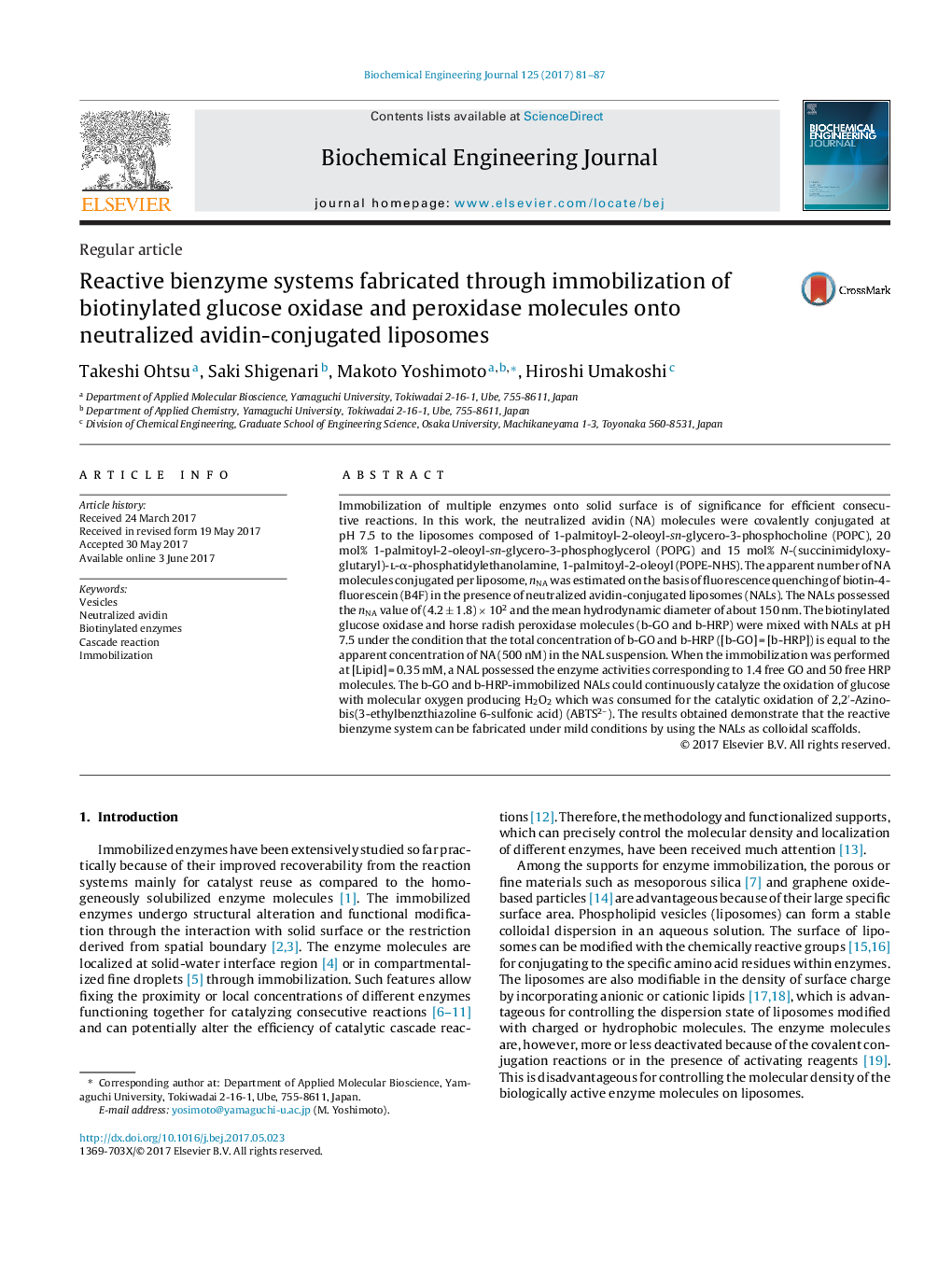| Article ID | Journal | Published Year | Pages | File Type |
|---|---|---|---|---|
| 4752126 | Biochemical Engineering Journal | 2017 | 7 Pages |
â¢Neutralized avidin-conjugated liposomes were used as colloidal scaffolds.â¢Two biotinylated enzymes were immobilized onto liposomes.â¢A consecutive reaction was catalyzed by liposomal bienzyme systems.
Immobilization of multiple enzymes onto solid surface is of significance for efficient consecutive reactions. In this work, the neutralized avidin (NA) molecules were covalently conjugated at pH 7.5 to the liposomes composed of 1-palmitoyl-2-oleoyl-sn-glycero-3-phosphocholine (POPC), 20 mol% 1-palmitoyl-2-oleoyl-sn-glycero-3-phosphoglycerol (POPG) and 15 mol% N-(succinimidyloxy-glutaryl)-l-α-phosphatidylethanolamine, 1-palmitoyl-2-oleoyl (POPE-NHS). The apparent number of NA molecules conjugated per liposome, nNA was estimated on the basis of fluorescence quenching of biotin-4-fluorescein (B4F) in the presence of neutralized avidin-conjugated liposomes (NALs). The NALs possessed the nNA value of (4.2 ± 1.8) Ã 102 and the mean hydrodynamic diameter of about 150 nm. The biotinylated glucose oxidase and horse radish peroxidase molecules (b-GO and b-HRP) were mixed with NALs at pH 7.5 under the condition that the total concentration of b-GO and b-HRP ([b-GO] = [b-HRP]) is equal to the apparent concentration of NA (500 nM) in the NAL suspension. When the immobilization was performed at [Lipid] = 0.35 mM, a NAL possessed the enzyme activities corresponding to 1.4 free GO and 50 free HRP molecules. The b-GO and b-HRP-immobilized NALs could continuously catalyze the oxidation of glucose with molecular oxygen producing H2O2 which was consumed for the catalytic oxidation of 2,2â²-Azino-bis(3-ethylbenzthiazoline 6-sulfonic acid) (ABTS2-). The results obtained demonstrate that the reactive bienzyme system can be fabricated under mild conditions by using the NALs as colloidal scaffolds.
